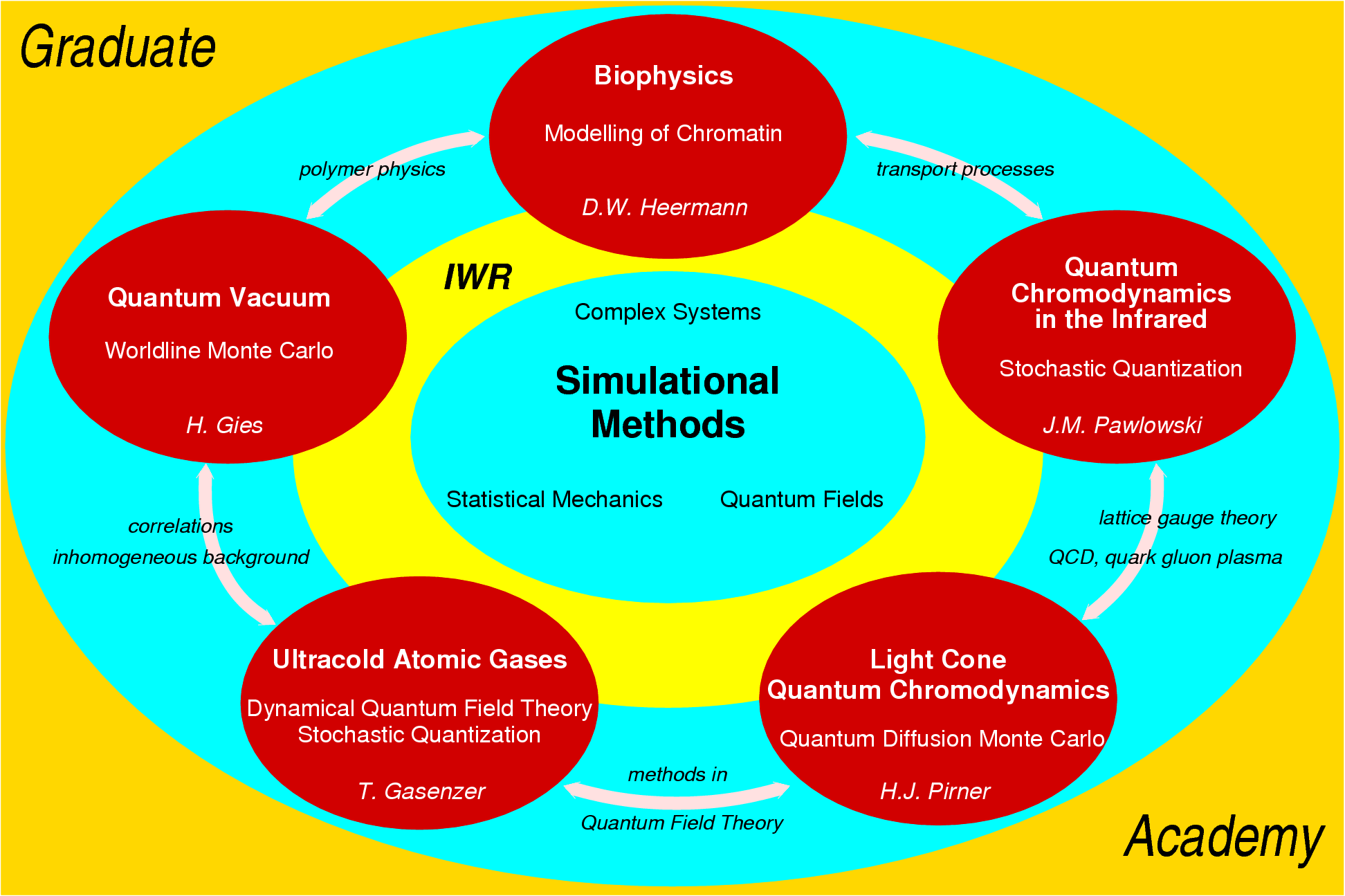Research Overview
The theoretical description of the physics of complex systems is tied, in a fundamental way, to computational and simulational methods.
Amongst these, Monte Carlo techniques hold one of the most prominent positions.
These techniques are characterized by a statistical sampling procedure to generate representative realizations of the system under consideration.
Future research will increasingly be based on the efficient use of such methods.
For complex systems, only simulations can, in general, give insight into the value of a given analytical approximation, if not provide the single path to a solution.
Most importantly, the usefulness of numerical methods relies on their potential to solve a given problem or theory (
The purpose of computing is insight, not numbers --- R.W. Hamming).
The Research Training Group links theory groups within the Institute for Theoretical Physics which have in common the extensive use of Monte Carlo algorithms, to investigate models and phenomena in Biophysics, in the Theory of Fundamental Fields, in the Physics of Macromolecules, and in the Physics of Ultracold Atom Gases.
With this Group it is intended to initiate a new Centre for Physical Computation within the Faculty of Physics, which enables to link different research topics with regard to their computational needs.
The Research Training Group aims at forming interfaces between the resource facilities, in particular at the Interdisciplinary Center for Scientific Computing (IWR), and the groups in physics which develop the projects and software on the basis of their specific research subjects.
Descriptions of the specific research projects are found here:
Simulational, in particular Monte Carlo and Langevin Stochastic Quantization methods, link these projects.
Moreover, specific analytical methods, as correlation functions for systems with inhomogeneous background, transport theory, quantum field theory, gauge theory, as well as phenomenological aspects like polymers, quantum chromodynamics, and the quark gluon plasma form important connections enabling close collaboration and detailed exchange.






